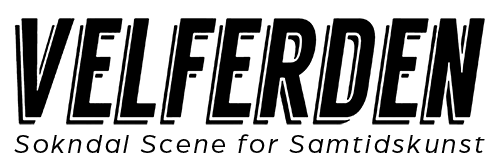Velferden's programme : WASTE / DEPOSIT
In 2023 and 2024 the theme for the Velferden programme is: WASTE / DEPOSIT.
Through a series of site visits, work stays for in-depth study and production, courses, exhibitions and seminars, we take a closer look at issues surrounding historical, current and future disposal of tailings from mining in Sokndal and the Dalane region.
The programme is interdisciplinary, interdisciplinary and multidisciplinary and will develop new artistic productions, provide space for in-depth studies in landscape, new research, relational expressions and new thoughts!
Inspections:
In the spring of 2023, we carry out 3 visits for groups of about 8 participants from different artistic disciplines and research fields. The groups go on excursions, meet local experts, and eat and talk together. In these meetings, we lay the foundation for further exploration of the potential and issues related to the landfill situations in Sokndal, which can also be seen in relation to global environmental challenges surrounding the disposal and handling of man-made waste.
More on the topic of Waste / Deposit:
In the mining industry, tailings is a term for the worthless residual product that remains after the economically valuable minerals have been separated out. Landfill is the term for a storage site for waste. Waste can be studied both in a concrete and symbolic sense, in different forms of matter and as a cause and symbol of the Anthropocene. We have a waste problem because we have stopped looking at waste as a resource. Landfill and waste in general have become synonymous with something we have to get rid of and that we don't want to be associated with. But situations are changing rapidly here, and we see that the waste we produce is becoming an increasingly large part of the social economy.
Through the programme, Velferden takes a closer look at the unprecedented possibilities buried in these new and strange landscapes. The landfills are interesting places from a biological perspective, but also because they are constructed, man-made and artificial interventions in our surroundings - providing immediate links to science fiction, the imagination and the creative artistic space.
The project is supported by the Arts Council, Rogaland County Council and Sokndal Municipality, and is being carried out in collaboration with Jøssingfjord Science Museum, Titania, Magma Geopark and the University of Stavanger, among others.
LANDFILLS IN SOKNDAL
SANDBEKK
At Sandbekk, in a valley near to Velferden, lies Titania's first deposit of tailings. The deposit consists of 6 million tons of coarse tailings from the extraction of magnetite and ilmenite concentrate in the period 1916-1965. The tailings were transported in iron buckets by cable car, and each bucket held approximately one ton. Today, we at Velferden are active users of the deposit, and we observe how nature takes over the human interventions over time. In the 1970s, the Norwegian College of Agriculture (now NMBU) started a planting project in collaboration with Titania, in order to limit sand escape and to study what kind of plants could possibly establish themselves in this nutrient-poor and contaminated sand. Over a period of 50 years, a relatively large forest and a varied biodiversity have established themselves at the landfill. The growth base is sparse and the forest is vulnerable, and this unique area now deserves further investigation and attention.
TELLNES
We want to compare what we see at the old sand deposit with the development taking place at Titania's newer sand deposit, which, with today's mining activity, is increasing in volume by 300 tons per hour. Titania has a long history of depositing tailings in the sea, but due to protests from various environmental organizations in the nineties, Titania was forced to establish a landfill. The landfill is almost full, and the risk of movements deep down in the sand masses has recently been uncovered. NVE has placed the landfill in hazard category 4 and is demanding a halt to landfilling until the dam system has been sufficiently reinforced. The worst-case scenario is that the dam breaks and the village of Åna-Sira, which is located below the landfill, is buried within minutes. Work on reinforcing the dam is well underway, and in the meantime Titania has been granted permission to deposit its tailings in a temporary valley, which will later be covered with rock. Titania says it has mining plans for the next fifty years. In order to continue to develop the company in line with higher environmental requirements and waste management regulations, the company needs to find alternative uses for the sand. Titania is involved in several research projects to find alternative uses, so that the product can be part of a circular and sustainable economy.
REKEFJORD STONE / NOAH
Rekefjord Stone is a stone supplier in Sokndal (established in the 1960s) that extracts large quantities of stone for, among other things, road construction in Europe. The company was recently acquired by Jelstein-owned NOAH, which operates the Langøya landfill. A couple of years ago, NOAH presented its plans to start planning work to be able to deposit hazardous waste in an older quarry, right out by the sea in Rekefjord. The quarry was to be filled with bottom ash and waste from the construction industry, and then covered with soil to become a new industrial area. The proposal met with great resistance from local residents and politicians, and was voted down before the impact assessments could begin. Rekefjord Stone and NOAH continue to look at sustainable solutions for how they can produce stone, and at the same time receive waste that utilizes and fills the voids left by the extraction. NOAH has a lot of experience in returning landscapes to their original form, and wants to do the same in Rekefjord.



